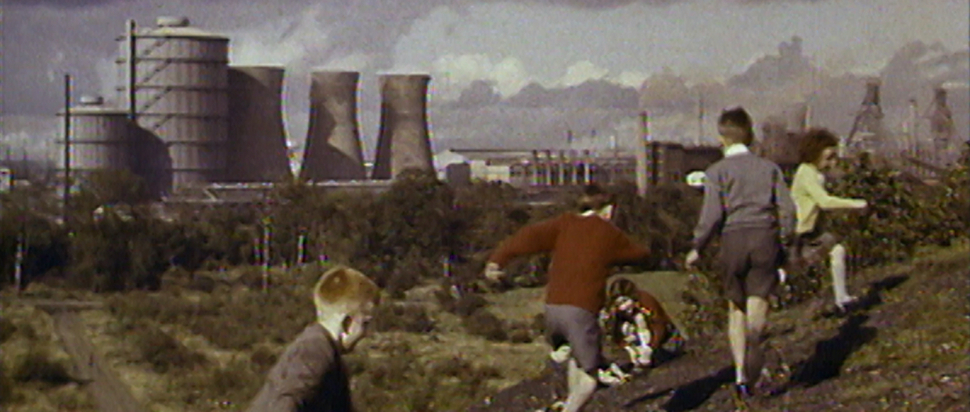Emily Munro on climate documentary Living Proof
Ahead of Glasgow's UN Climate Conference (aka COP26), Take One Action film festival presents Living Proof – A Climate Story, an evocative documentary exploring Scotland's complex relationship to the global climate crisis, told using archive footage
George Santayana was bang on the money regarding the past: those who cannot remember it are condemned to repeat it. Emily Munro seems to be in agreement with that great Spanish thinker. As Head of Learning and Outreach for the National Library of Scotland Moving Image Archive, it’s her job to find ways of bringing Scotland’s rich screen heritage to modern audiences. As well as education and programming projects, her tactics for getting the archive out there have extended to filmmaking in recent years, applying her curatorial viewpoint to the library’s collection to make feature-length documentaries from a particular thematic angle. First there was Her Century: Scottish Women On Film, which stitched together archive footage telling the story of women in 20th-century Scotland. Now comes Living Proof – A Climate Story, a vivid examination of Scotland’s relationship to the natural environment.
The clips in Living Proof span roughly four decades and expose wildly changing attitudes, not to mention cinematic styles, from twee public information films from the 1940s to slick corporate videos of the early 1980s via masterpieces like The Big Mill, Laurence Henson’s award-winning documentary taking us inside the vast Ravenscraig Works in 1962. Despite this relatively short window of archive material, Munro was thinking of a bigger picture when assembling the film.
“I was interested in the deep time of climate,” she explains. “Obviously the collection only speaks to the 20th century, so that's what I have to deal with. But at the same time, the questions that we're dealing with now, we really need to learn to have a longer perspective in terms of what we do and what the consequences are gonna be.”
Documentaries assembled from archive material tend to take two forms. One uses edited footage as the foundation for an unrelated narrative told using an omnipotent voiceover – call this the Adam Curtis mode. The other is more expressionistic, combining music and montage to rhapsodic effect; think of music-archive mashup From Scotland with Love, Virginia Heath’s collaboration with King Creosote, or Paul Wright’s Arcadia, featuring music by Portishead’s Adrian Utley and Goldfrapp’s Will Gregory. Munro’s approach, however, is more sensitive to the original work.
There are montages set to music, but they come in short, sharp bursts. “I wanted those sequences to act as markers throughout,” she explains. Three Scottish artists – Louise Connell, Brownbear and Post Coal Prom Queen – provide the music for these sections, which not only help transition between the film's themes and periods, they also allowed Munro the opportunity to experiment. “I guess those montages are my perspective,” she admits. “That’s me thinking about my feelings around the debate. But also, they were an opportunity to play with time and accelerate time, and to prepare the viewer for what comes next.”
This is the only time Munro indulges in editorialising. Elsewhere, she lets the archive play out in substantial blocks, allowing the voices of the past to speak as they did in their original context. “Maybe it's because I'm a curator as well, so I feel that sense of custodianship over the footage,” she suggests. “So I wanted the footage to also stand alone.”
What these sequences make clear is that the debate around Scotland’s natural resources and their connection to the economic plight of the nation has long been debated on screen. Interestingly, the Scotland we see emerging in the mid-40s appears to be a greener, more future-conscious one than in the latter half of the century, where big industry and the mining of North Sea oil fields sent us down a path even more dependent on fossil fuels. One Ministry of Information film from 1943 featuring four men – an engineer, a gamekeeper, and two soldiers – sharing a train carriage reveals how hydroelectricity was seen by many as the future of Scotland’s power needs, as well as providing jobs for those returning from war.
“I suppose for me, that hydroelectric footage shows we've got choices,” says Munro. "They're coming out of the Second World War and already looking ahead. They’re asking, ‘What's next? Where are the jobs coming from? Where's our energy coming from?’ During the war, they were really frightened by the scarcity of the energy supply because they could no longer import oil so easily. So they had to come up with something else. So vision was possible, investment was made, things happened.”
It doesn't take much of a leap to see parallels between Scotland in the 1940s and the outlook today as we recover from the pandemic and brace for a climate crisis that’s sure to have a huge impact on our way of life unless drastic action is taken. “Like back then, I feel like we're at this crossroads where we have to make some really big decisions," says Munro. "But who are we going to allow to make those decisions on our behalf? Is it politicians? Is it corporations? Is it communities? How do we work with all those different elements in an advanced capitalist society?”
With COP26 on the horizon, there’s no better time to be asking these questions.
Living Proof is available to stream for free via FilmHubScotland / Stream Screen Argyll
The film had its world premiere as Take One Action's opening film; takeoneaction.org.uk
